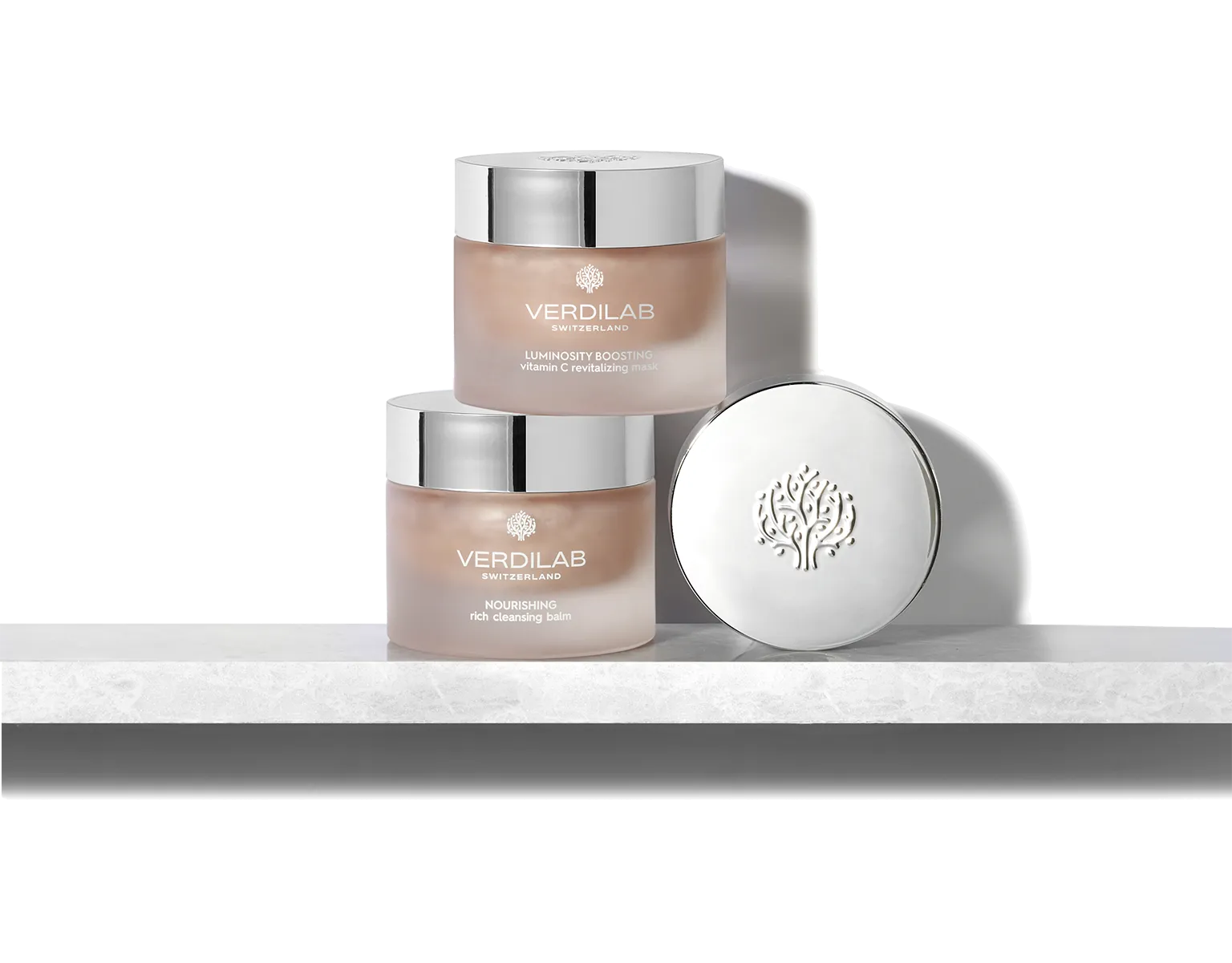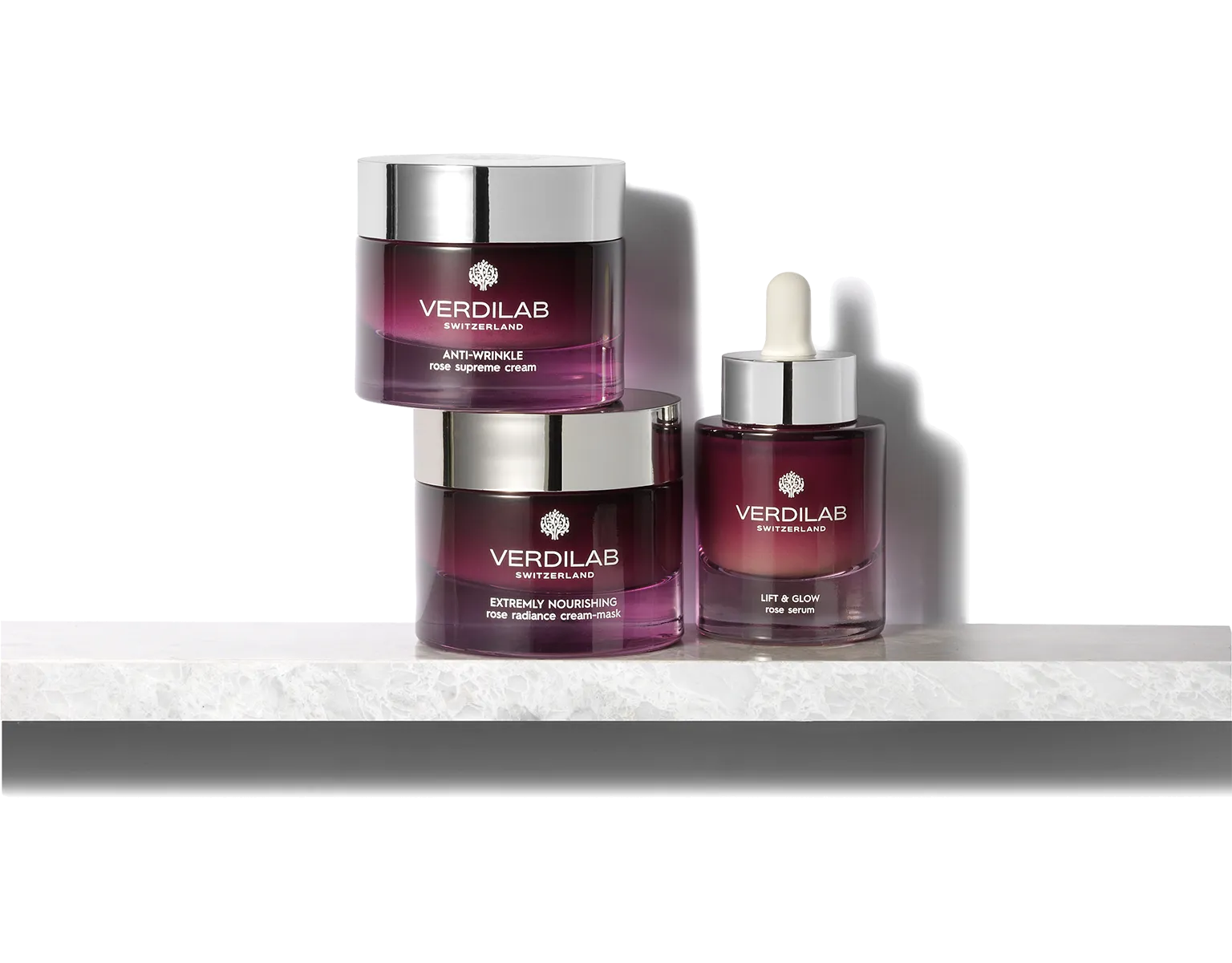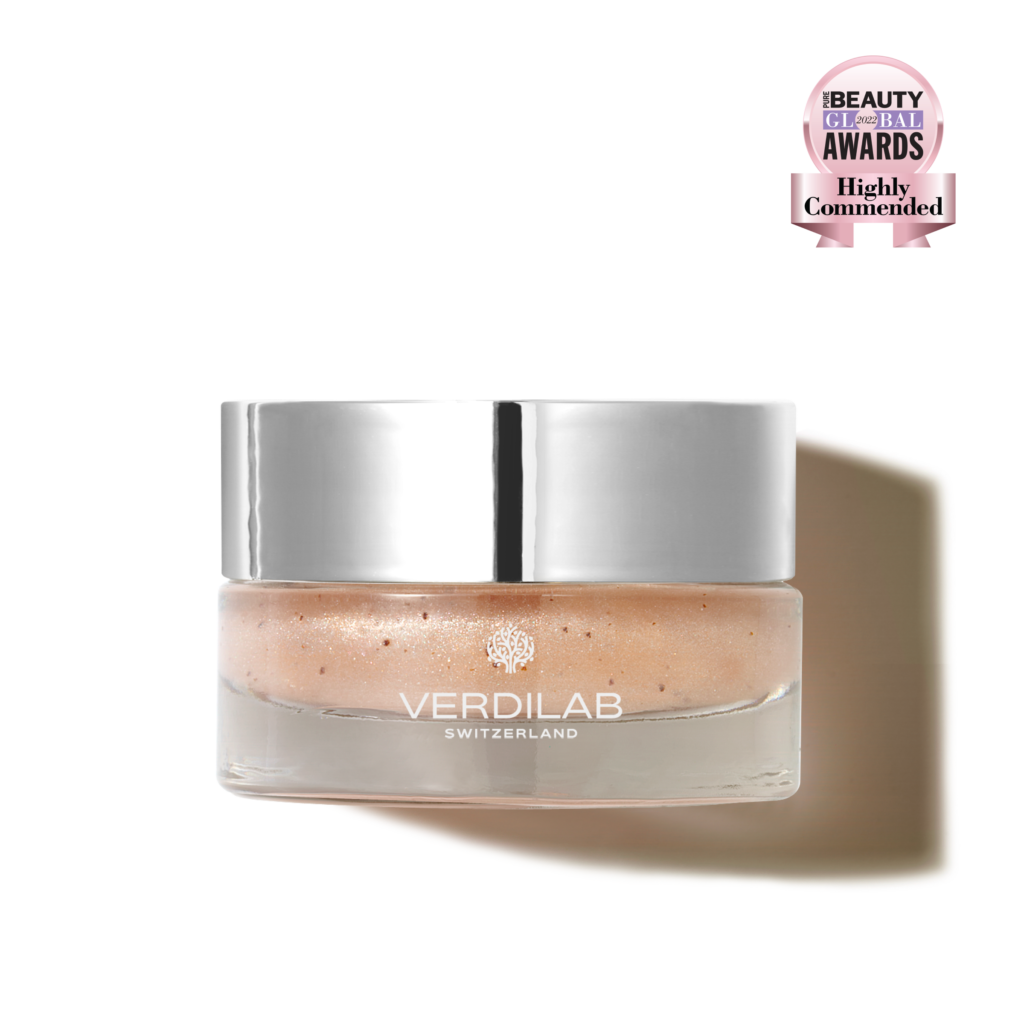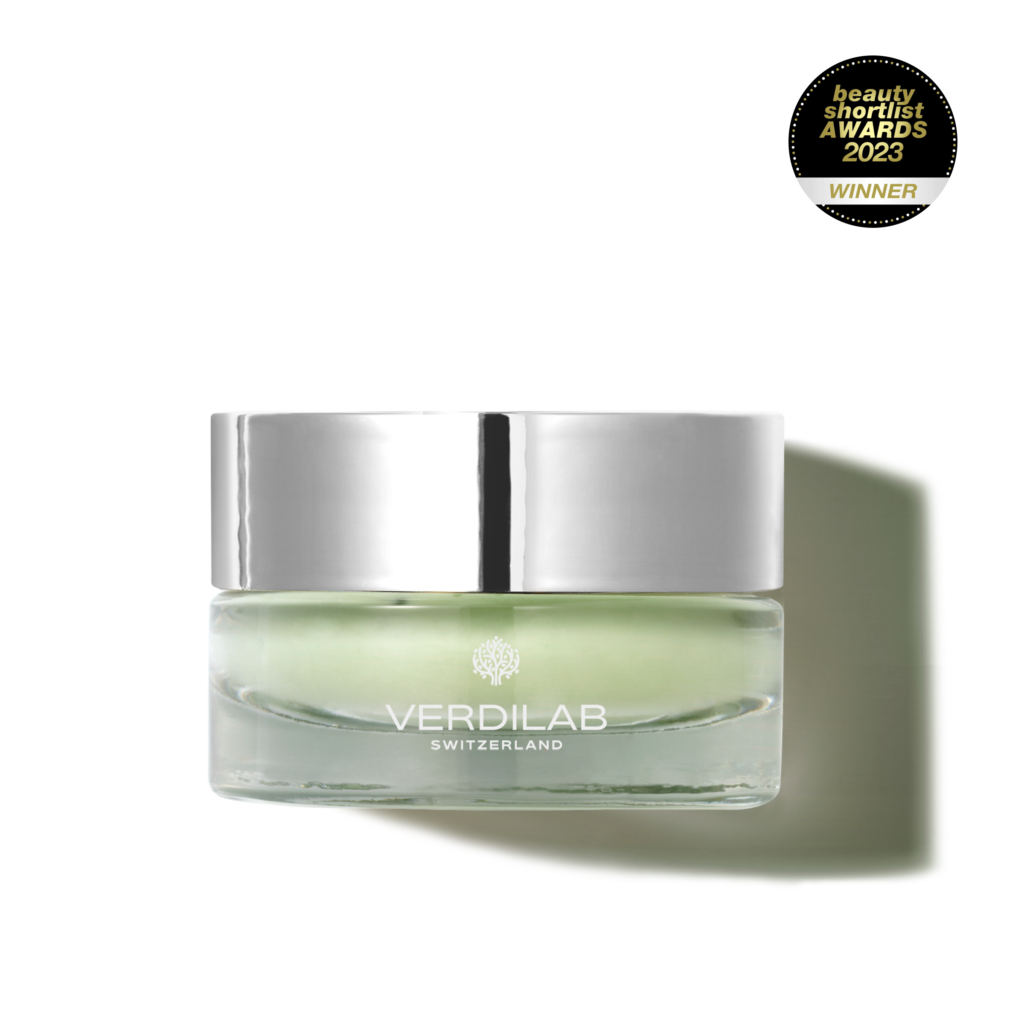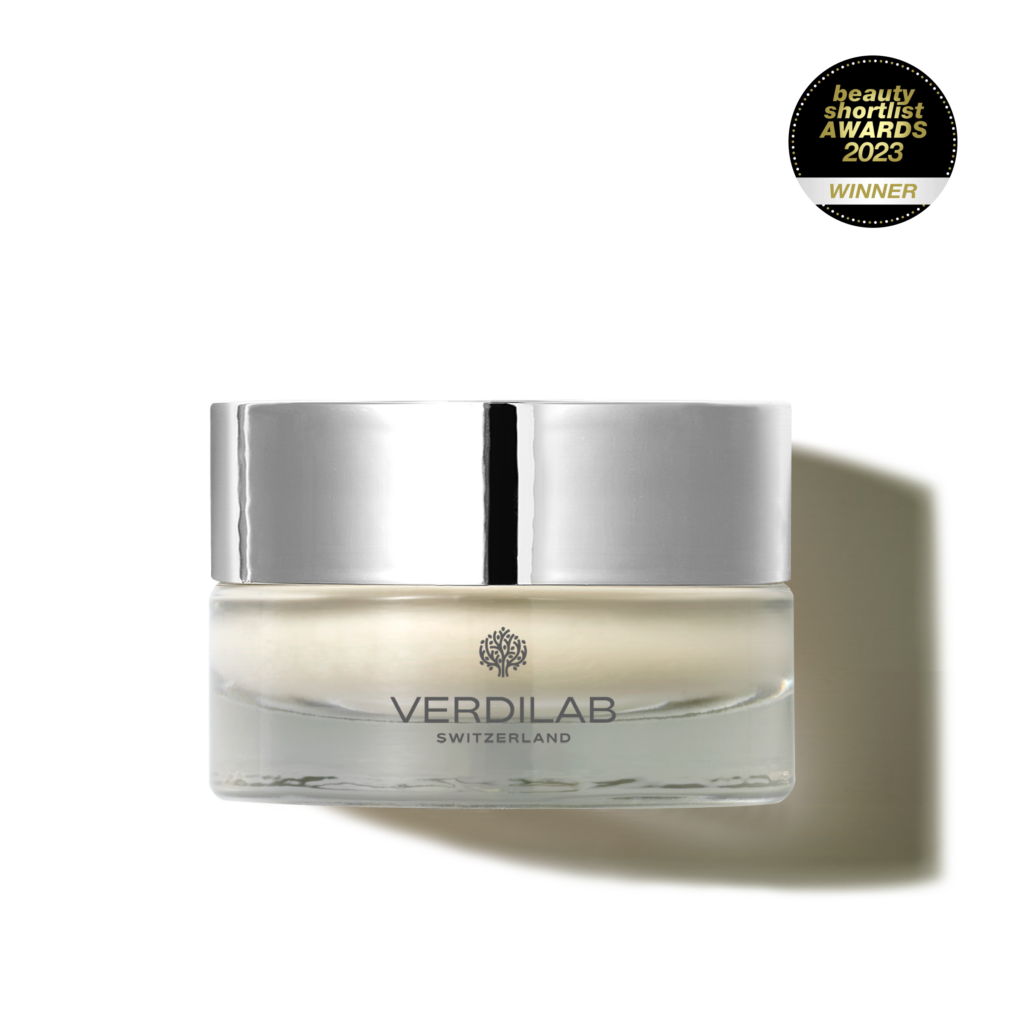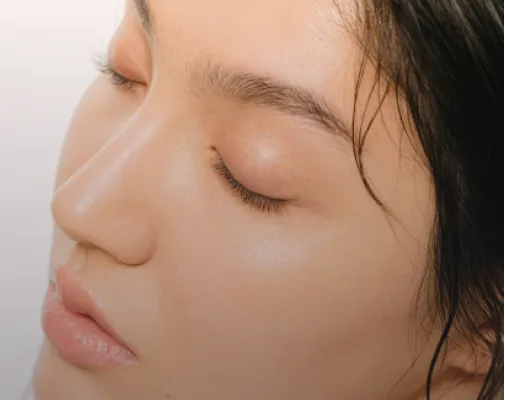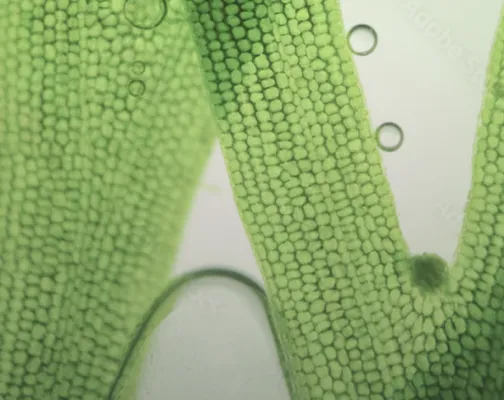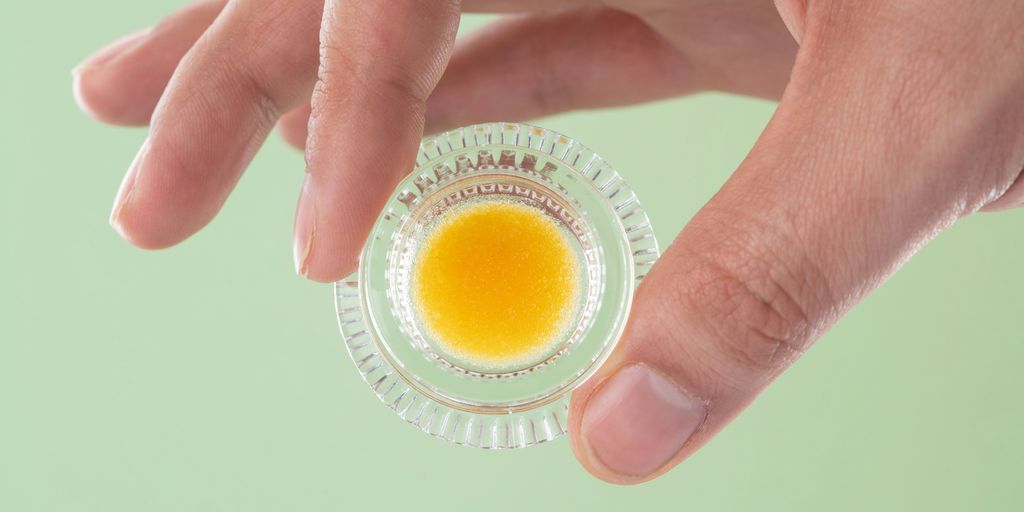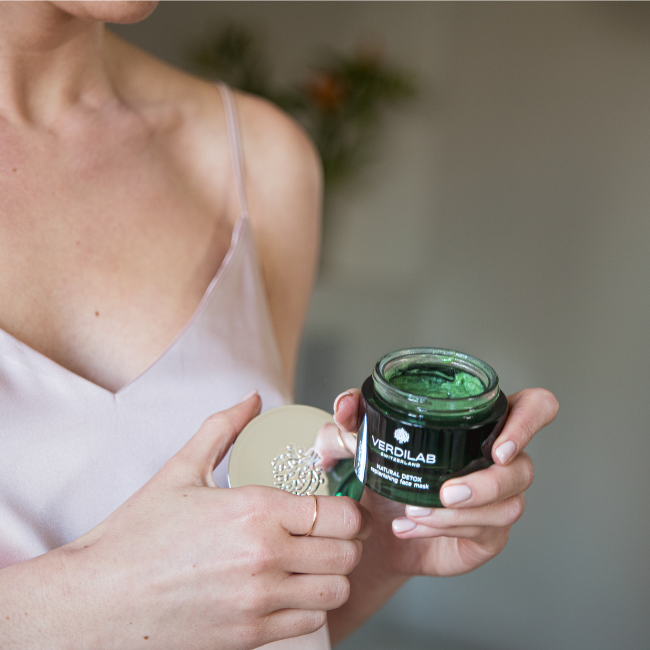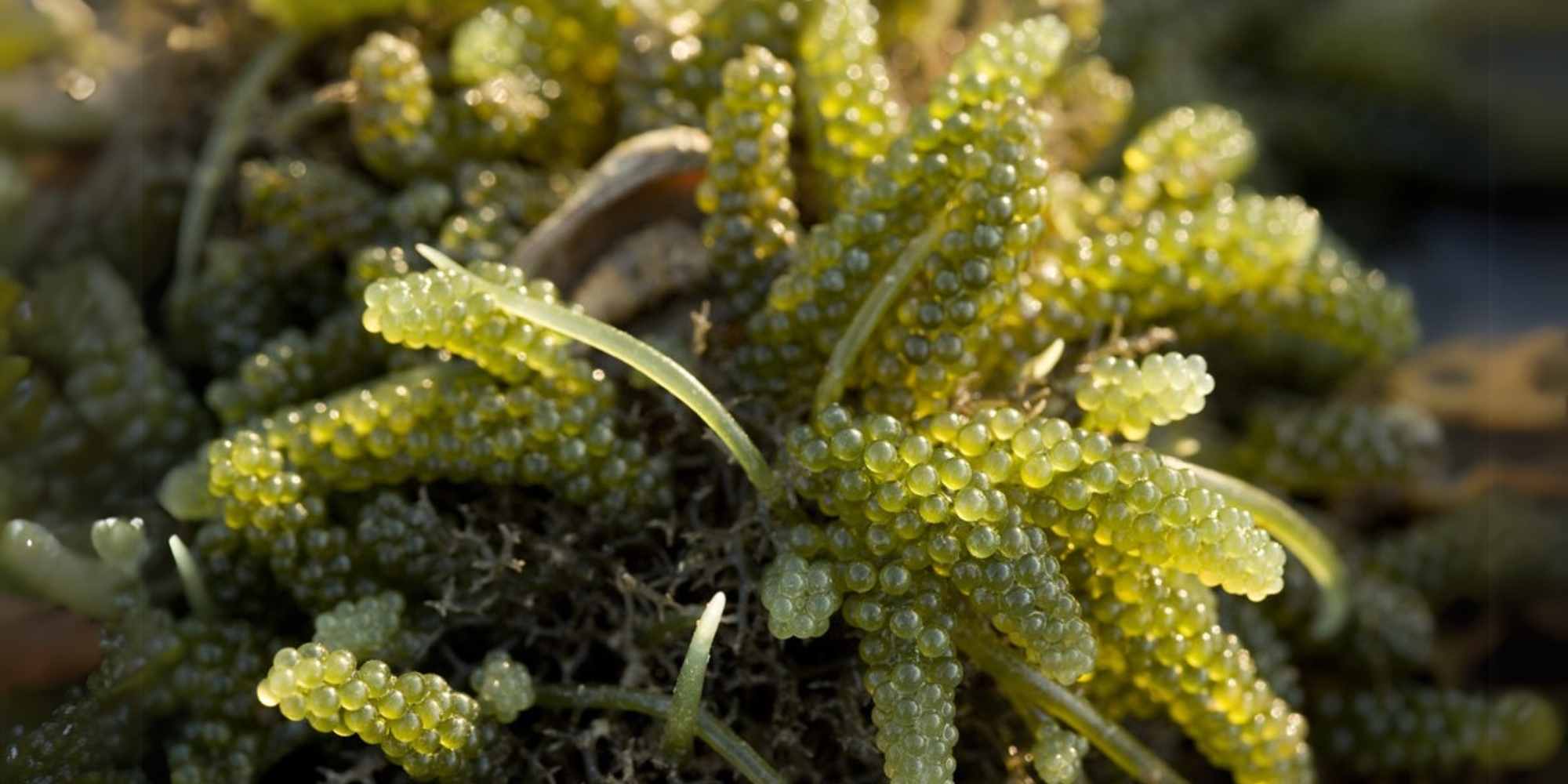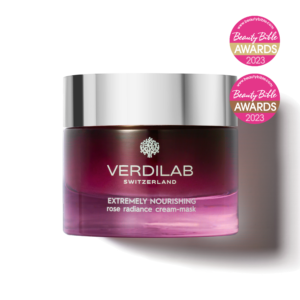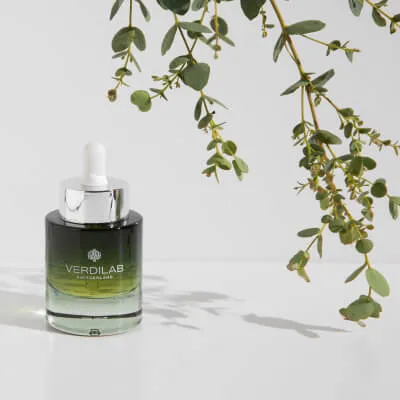Undaria pinnatifida, commonly known as wakame, is a type of brown seaweed that has gained attention for its potential uses in various fields like food, medicine, and cosmetics. The debate on whether its extract is natural or synthetic is important for consumers and researchers alike. This article explores the chemical makeup of Undaria pinnatifida, its natural habitats, and the methods of synthetic production, while also discussing its health benefits and applications in biotechnology.
Key Takeaways
-
Undaria pinnatifida is rich in bioactive compounds that offer health benefits.
-
The extract can be obtained from both natural sources and through synthetic methods.
-
Natural extracts are often preferred for their safety and effectiveness compared to synthetic alternatives.
-
The seaweed is cultivated in many regions, contributing to its availability and economic value.
-
Research is ongoing to better understand the potential uses of Undaria pinnatifida in various industries.
Chemical Composition of Undaria Pinnatifida Extract
Primary Components Identified
Undaria pinnatifida, commonly known as Wakame, is rich in various bioactive compounds. The primary components include:
-
Polysaccharides: These are complex carbohydrates that provide numerous health benefits.
-
Polyphenols: Known for their antioxidant properties, these compounds help combat oxidative stress.
-
Carotenoids: These pigments are important for eye health and have antioxidant effects.
-
Vitamins: Essential for various bodily functions, including immune support.
Methods of Chemical Analysis
The chemical composition of U. pinnatifida is typically analyzed using several methods:
-
Gas Chromatography-Mass Spectrometry (GC-MS): This technique helps identify volatile compounds.
-
Nuclear Magnetic Resonance (NMR) Spectroscopy: Used for detailed molecular characterization.
-
Thin-Layer Chromatography (TLC): A method for separating and identifying compounds in the extract.
Comparison with Other Seaweed Extracts
When compared to other seaweed extracts, U. pinnatifida stands out due to its unique profile:
-
Higher antioxidant activity: Studies show that U. pinnatifida has significant antioxidant properties, particularly in its blade portion.
-
Diverse bioactive compounds: It contains a wider variety of beneficial compounds compared to many other seaweeds.
-
Nutritional value: The extract is noted for its high protein and low energy content, making it a popular choice in health foods.
The chemical composition of Undaria pinnatifida not only contributes to its nutritional value but also enhances its potential applications in health and wellness products.
In summary, the chemical composition of Undaria pinnatifida extract is complex and varied, making it a valuable resource in both nutrition and biotechnology. Its unique components and properties set it apart from other seaweed extracts, highlighting its importance in various applications.
Natural Sources of Undaria Pinnatifida

Geographical Distribution
Undaria pinnatifida, commonly known as wakame, is primarily found in the coastal waters of East Asia, particularly in Japan, Korea, and China. It has also spread to other regions, including New Zealand and parts of Europe, where it is considered an invasive species. The following table summarizes its geographical presence:
|
Region |
Status |
|---|---|
|
Japan |
Native |
|
Korea |
Native |
|
China |
Native |
|
New Zealand |
Introduced |
|
Europe |
Invasive |
Cultivation Practices
The cultivation of Undaria pinnatifida involves several methods, including:
-
Wild Harvesting: This method relies on natural populations found in coastal areas.
-
Aquaculture: Farmers cultivate wakame in controlled environments, often using ropes or nets.
-
Sustainable Practices: Efforts are made to ensure that harvesting does not harm local ecosystems.
Sustainable practices are crucial to maintaining the balance of marine life while benefiting from this valuable resource.
Environmental Impact
The harvesting of Undaria pinnatifida can have both positive and negative effects on the environment:
-
Positive Effects: It can enhance local economies and provide food sources.
-
Negative Effects: Overharvesting can lead to habitat destruction and loss of biodiversity.
-
Invasive Species: In regions where it is not native, it can outcompete local species, disrupting ecosystems.
The balance between economic benefits and environmental sustainability is essential for the future of Undaria pinnatifida harvesting.
In summary, while Undaria pinnatifida is a valuable resource, its cultivation and harvesting must be managed carefully to protect both the environment and local economies.
Production of Undaria Pinnatifida Extract
Laboratory Synthesis Methods
The production of Undaria pinnatifida extract involves various laboratory techniques aimed at replicating the natural compounds found in the seaweed. Common methods include:
-
Chemical synthesis: Utilizing organic chemistry to create bioactive compounds.
-
Biotechnological approaches: Employing microbial fermentation to produce desired metabolites.
-
Enzymatic extraction: Using enzymes to break down cell walls and release valuable compounds.
Challenges in Production
Producing extracts of Undaria pinnatifida presents several challenges:
-
Complexity of compounds: The intricate structure of bioactive compounds makes synthesis difficult.
-
Cost-effectiveness: High production costs can limit the feasibility of methods.
-
Regulatory hurdles: Meeting safety and efficacy standards can be a lengthy process.
Comparison with Natural Extracts
When comparing synthetic and natural extracts, several factors come into play:
-
Efficacy: Natural extracts often exhibit superior bioactivity due to the synergistic effects of multiple compounds.
-
Safety: Natural extracts are generally perceived as safer, while synthetic versions may have unknown side effects.
-
Cost: Natural extracts can be more economical due to lower production costs in some cases.
The exploration of synthetic methods for producing Undaria pinnatifida extract is crucial for expanding its applications in various industries, including pharmaceuticals and cosmetics. Understanding the balance between natural and synthetic sources will guide future research and development efforts.
Bioactive Compounds in Undaria Pinnatifida Extract
Antimicrobial Properties
Undaria pinnatifida is known for its antimicrobial properties, which are attributed to various bioactive compounds. Key components include:
-
Fucoidan: A polysaccharide with significant antibacterial effects.
-
Fucoxanthin: A carotenoid that exhibits antioxidant and anti-inflammatory properties.
-
Phlorotannins: Polyphenolic compounds that contribute to the antimicrobial activity.
Antioxidant Properties
The extract also possesses strong antioxidant properties, which help in neutralizing free radicals. Studies have shown that:
-
The antioxidant activity is highest in the blade of the seaweed, with values reaching 126.907 ± 28.993 mmol Trolox equivalent/g.
-
Antioxidants in U. pinnatifida can protect against oxidative stress, which is linked to various diseases.
Potential Health Benefits
Research indicates several potential health benefits of U. pinnatifida extract, including:
-
Anti-inflammatory effects: Reducing inflammation in the body.
-
Anticancer properties: Some studies suggest it may inhibit cancer cell growth.
-
Support for skin health: The extract is used in skincare products for its regenerative properties.
The diverse bioactive compounds in Undaria pinnatifida not only enhance its nutritional value but also offer promising applications in health and wellness.
In summary, the bioactive compounds in Undaria pinnatifida extract, such as fucoidan, fucoxanthin, and phlorotannins, contribute to its antimicrobial and antioxidant properties, making it a valuable resource in both nutrition and medicine.
Applications of Undaria Pinnatifida Extract in Biotechnology
Pharmaceutical Uses
Undaria pinnatifida extract has shown promising potential in various pharmaceutical applications. Its bioactive compounds, particularly polysaccharides, are being explored for:
-
Antimicrobial properties against pathogens like Vibrio species, which are harmful to both fish and humans.
-
Antioxidant effects that can help in reducing oxidative stress in cells.
-
Therapeutic agents for treating diseases, including skin conditions and infections.
Nutraceutical Applications
The extract is also gaining attention in the nutraceutical sector due to its rich nutritional profile. Key benefits include:
-
High fiber content that aids digestion.
-
Rich in vitamins and minerals, contributing to overall health.
-
Potential weight management benefits due to low energy density.
Cosmetic Industry
In the cosmetic field, Undaria pinnatifida extract is utilized for its skin-enhancing properties. It is known to:
-
Improve skin hydration and elasticity.
-
Act as a natural anti-inflammatory agent, helping to calm irritated skin.
-
Provide antioxidant protection, which is essential for maintaining youthful skin.
The versatility of Undaria pinnatifida extract in biotechnology highlights its potential as a sustainable resource for health and wellness applications. Its unique properties make it a valuable candidate for further research and development in various industries.
Nutritional Value of Undaria Pinnatifida
Macronutrient Content
Undaria pinnatifida, commonly known as wakame, is a highly nutritious seaweed. It is rich in essential nutrients, making it a valuable addition to diets. The primary macronutrients found in wakame include:
-
Carbohydrates: Approximately 9.14%, providing energy and dietary fiber.
-
Proteins: About 3.03%, which are essential for growth and repair.
-
Lipids: Roughly 0.64%, including beneficial unsaturated fatty acids.
Micronutrient Profile
Wakame is also a source of various vitamins and minerals, which are crucial for maintaining health. Key micronutrients include:
-
Vitamins: A, C, E, and K, which support immune function and skin health.
-
Minerals: Calcium, magnesium, and iron, important for bone health and oxygen transport.
Dietary Benefits
The consumption of Undaria pinnatifida offers several health benefits:
-
Antioxidant Properties: Contains antioxidants like flavonoids and carotenoids that help combat oxidative stress and inflammation.
-
Low-Calorie Food: It is low in calories, making it suitable for weight management.
-
Source of Omega Fatty Acids: Provides a healthy balance of omega-3 and omega-6 fatty acids, beneficial for heart health.
Wakame is not only a nutritious food but also a sustainable option that can help address nutritional deficiencies in modern diets.
Future Perspectives on Undaria Pinnatifida Extract
Research Directions
The future of Undaria pinnatifida extract research is promising, focusing on several key areas:
-
Exploration of Bioactive Compounds: Continued investigation into the various bioactive compounds found in U. pinnatifida, such as fucoidan, which has shown potential in health applications.
-
Sustainable Harvesting Practices: Developing methods to ensure that harvesting does not harm the environment, promoting sustainability in the industry.
-
Innovative Extraction Techniques: Researching new extraction methods that maximize yield while preserving the integrity of the bioactive compounds.
Technological Innovations
Technological advancements are expected to play a significant role in the future of U. pinnatifida extract:
-
Subcritical Water Extraction: This method has shown promise in efficiently extracting valuable compounds from U. pinnatifida, potentially increasing the extract’s market value.
-
Biotechnological Applications: Utilizing U. pinnatifida in biotechnological fields, such as pharmaceuticals and nutraceuticals, could lead to new products that benefit human health.
-
Antimicrobial Research: Investigating the antimicrobial properties of U. pinnatifida extracts against various pathogens, which could lead to new treatments for infections.
Market Trends
The market for U. pinnatifida extract is likely to grow due to:
-
Increased Consumer Awareness: As consumers become more health-conscious, the demand for natural products is rising.
-
Regulatory Support: Governments are increasingly supporting the use of natural extracts in food and cosmetics, which could boost the market.
-
Diverse Applications: The versatility of U. pinnatifida in various industries, including food, cosmetics, and pharmaceuticals, will likely drive its popularity.
The potential of Undaria pinnatifida extract lies not only in its natural properties but also in the innovative approaches to harnessing its benefits for health and industry. Sustainable practices and technological advancements will be crucial in shaping its future.
Extraction Techniques for Undaria Pinnatifida
Traditional Methods
Extraction of Undaria pinnatifida can be performed using traditional methods that have been utilized for centuries. These methods often include:
-
Soxhlet extraction: This method uses a solvent to extract bioactive compounds from the seaweed. The seaweed is placed in a thimble, and the solvent is heated, allowing it to evaporate and condense back into the thimble, continuously extracting the compounds.
-
Cold pressing: This technique involves mechanically pressing the seaweed to extract oils and other compounds without the use of heat, preserving sensitive nutrients.
-
Infusion: In this method, the seaweed is steeped in hot water or oil, allowing the active compounds to dissolve into the liquid.
Modern Techniques
Recent advancements have introduced modern extraction techniques that enhance efficiency and yield:
-
Ultrasound-assisted extraction: This method uses ultrasonic waves to agitate the solvent, increasing the extraction rate of bioactive compounds.
-
Microwave-assisted extraction: This technique employs microwave energy to heat the solvent and seaweed mixture, leading to faster extraction times.
-
Supercritical fluid extraction: Utilizing supercritical CO2 as a solvent, this method allows for the extraction of high-purity compounds without residual solvents.
Regulatory and Safety Aspects of Undaria Pinnatifida Extract
International Regulations
The regulation of Undaria pinnatifida extract varies across countries, but several key points are generally observed:
-
Food Safety Standards: Many countries have established guidelines to ensure that seaweed extracts are safe for consumption. These include limits on contaminants and microbiological safety.
-
Labeling Requirements: Products containing Undaria pinnatifida must often include clear labeling to inform consumers about their origin and any potential allergens.
-
Approval Processes: In some regions, extracts must undergo rigorous testing and approval before they can be marketed as food or supplements.
Safety Assessments
Safety assessments for Undaria pinnatifida extract typically focus on:
-
Chemical Safety: Evaluating the presence of harmful substances, including heavy metals and pesticides.
-
Microbiological Safety: Ensuring that the extract is free from pathogens that could pose health risks, as highlighted in recent studies on microbiological safety (Cotas, 2024).
-
Toxicological Studies: Conducting tests to determine any potential toxic effects on humans or animals.
Frequently Asked Questions
What is Undaria pinnatifida extract?
Undaria pinnatifida extract comes from a type of brown seaweed, often known as Wakame. It’s used in food and various health products.
Is Undaria pinnatifida extract natural?
Yes, Undaria pinnatifida extract is considered natural as it comes from seaweed, which grows in the ocean.
How is Undaria pinnatifida extract made?
The extract is made by collecting the seaweed, cleaning it, and then using methods like soaking in solvents to get the beneficial compounds.
What are the health benefits of Undaria pinnatifida extract?
This extract has antioxidants and can help with immune support, digestion, and may have anti-inflammatory properties.
Can Undaria pinnatifida extract be synthetic?
While the extract is natural, some products might try to replicate its benefits synthetically, but they won’t be the same as the natural form.
Where can I find Undaria pinnatifida extract?
You can find it in health food stores, online supplements, and sometimes in Asian markets where seaweed is sold.
Are there any side effects of using Undaria pinnatifida extract?
Most people can safely use it, but some might experience digestive issues or allergic reactions. It’s best to start with a small amount.
How does Undaria pinnatifida extract compare to other seaweed extracts?
Undaria pinnatifida is known for its rich nutrient profile and antioxidant properties, making it popular compared to other seaweeds.
References:
-
Antimicrobial and antioxidant activities of novel bioactive compounds from Undaria pinnatifida. Food Research International, 2024. Available at: https://www.sciencedirect.com/science/article/abs/pii/S0963996924010913
-
Undaria Pinnatifida: Impacts on Marine Ecosystems. Frontiers in Marine Science, 2024. Available at: https://www.frontiersin.org/journals/marine-science/articles/10.3389/fmars.2024.1410005/full
-
Methods for Undaria Cultivation. ResearchGate, 2015. Available at: https://www.researchgate.net/figure/a-c-Methods-for-Undaria-cultivation-d-Undaria-spore-collector-The-frame-is-50-cm-A_fig7_289251186
-
Bioactive Compounds from Marine Seaweeds. ResearchGate, 2021. Available at: https://www.researchgate.net/figure/Bioactive-compounds-from-marine-seaweeds_fig1_342816407
-
Marine Seaweed Extracts: Applications in Biotechnology. ScienceDirect, 2024. Available at: https://www.sciencedirect.com/science/article/pii/S2666833524001461
-
Bioactive Compounds in Marine Environments. Springer, 2024. Available at: https://link.springer.com/article/10.1007/s10126-024-10361-5
-
Natural Products from Marine Algae. Frontiers in Natural Products, 2024. Available at: https://www.frontiersin.org/journals/natural-products/articles/10.3389/fntpr.2024.1425242/full
-
HPLC Chromatogram of Fucoxanthin Extract from Undaria Pinnatifida. ResearchGate, 2014. Available at: https://www.researchgate.net/figure/HPLC-chromatogram-of-fucoxanthin-extract-from-U-pinnatifida_fig2_261100440
-
Bioactive Seaweed Compounds: A Review. Marine Drugs, 2022. Available at: https://www.mdpi.com/1660-3397/22/8/365
-
Marine Algae and Health Benefits. Marine Drugs, 2022. Available at: https://www.mdpi.com/1660-3397/22/8/344
-
Seaweed-Derived Bioactives in Food Science. ScienceDirect, 2024. Available at: https://www.sciencedirect.com/science/article/pii/S1756464624003050
-
Undaria Pinnatifida: A Review. Marine Biotechnology, 2024. Available at: https://www.mdpi.com/1661-3821/4/3/20
-
Marine Bioactives: Health and Industry Applications. NCBI, 2024. Available at: https://www.ncbi.nlm.nih.gov/pmc/articles/PMC11312663/
